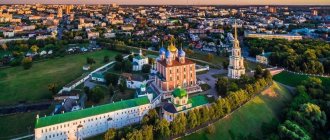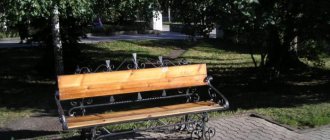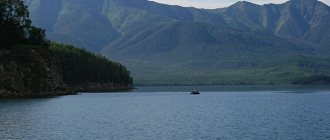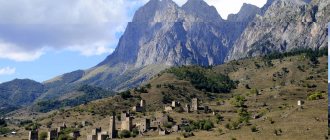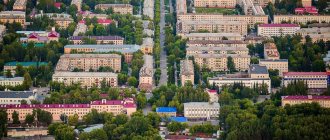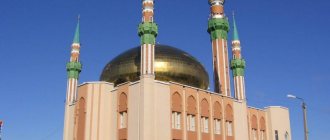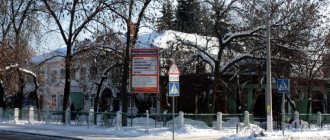Content
- 1 Cities with millionaires people 1.1 Ufa
- 2.1 Sterlitamak
- 3.1 Salavat
- 4.1 Tuymazy
- 5.1 Baymak
Ufa is a modern metropolis
Ufa is the capital of Bashkortostan. This is the only metropolis on the territory of the republic. Together with its suburbs, Ufa forms an agglomeration with a population of 1,454,000 citizens. The population density here is much higher than the national average - 1,582 people/sq. km. The number of Russians is significantly greater than the Bashkirs. The national composition is represented by the following ethnic groups:
- Russians: 49%;
- Tatars: 28%;
- Bashkirs: 17%.
The number of other nationalities is insignificant. Ufa is a modern, very urbanized metropolis, comfortable for living. It took 2nd place in the nomination for the best city for business in the Russian Federation 2 times in a row. Ufa has a fairly strong economy. It is also a major scientific and educational center, where the best human resources of the country flock. Ufa is an ancient settlement with a rich heritage. This place was promising back in the Middle Ages. Therefore, we can say that his financial well-being is historically determined. There is evidence that before the arrival of the Russians, a large settlement was located on the site of Ufa, where the headquarters of the representative of the Nogai Horde operated. With the advent of the Moscow kingdom, it acquired urban status and became the capital of the Ufa district. The Russian army was stationed here. A Kremlin with a fortress wall was built, enclosing the commercial and industrial part. Even then, Ufa was the most important administrative point with a developed economy.
Since the beginning of the 20th century, the city's population began to increase in huge leaps. Since about the middle of the last century, the demographic curve has been located almost vertically on the graph of the increase in the number of city residents. This can be explained by the sharp rise in industry in the 30s of the last century. Many enterprises of various profiles were concentrated here before. With the construction of the railroad, production increased.
Heavy and light industry enterprises began to be built at a rapid pace, and the development of oil fields began. This attracted workers from all over the country. The oil industry is now of utmost importance for the economy of Ufa. There is a giant oil refining complex equipped with modern equipment. The territory of the Ufa agglomeration contains a lot of production facilities of electrical, mechanical engineering, and instrument-making enterprises. There are also many reinforced concrete factories, woodworking factories, and food factories. People from all over the region flock here, which explains the high population density.
Medium-sized cities 20-100 thousand people
Tuymazy
Population 68,246 (2020).
Beloretsk
Population 64,921 (2020).
Ishimbay
Population 64,386 people (2020).
Sibay
Population 60,780 people (2020).
Kumertau
Population 59,478 (2020).
Belebey
Population 59,229 (2020).
Meleuz
Population 56,677 (2020).
Birsk
Population 46,512 (2020).
Uchaly
Population 37,898 (2020).
Blagoveshchensk (Bashkortostan)
The city should not be confused with the much larger city of Blagoveshchensk - the capital of the Amur region
Population 34,771 (2020).
In the city, among other things, the Blagoveshchensk shipbuilding and ship repair plant is located.
Durtyuli
Population 31,021 people (2020).
Yanaul
Population 25,109 (2020).
Davlekanovo
Population 23,380 people (2020).
History and Culture of Bashkortostan
There are 21 cities in the republic, but only four of them - Ufa, Sterlitamak, Belebey and Birsk - have a long history, the rest arose on the site of workers' settlements during the years of rapid industrial construction. Here is a list of the young cities of Agidel, Baymak, Beloretsk, Blagoveshchensk, Davlekanovo, Dyurtyuli, Ishim-bay, Kumertau, Meleuz, Neftekamsk, Oktyabrsky, Salavat, Sibay, Tuymazy, Uchaly, Yanaul, Mezhgorye
The first cities about which there is information were built by the Sumerians about five and a half thousand years ago. The land of the Sumerians was located on the territory of modern Iraq, between the Tigris and Euphrates rivers. It was called Mesopotamia, which translated from Greek means “country between rivers”
Four thousand years ago, man discovered the secret of making bronze - an alloy of copper, tin and other metals. The Urals became a center for the extraction of copper ore and the manufacture of various metal products.
Settlements appeared near the mines, in which skilled craftsmen worked. Some smelted metal, others were blacksmiths.
Such settlements quickly became centers of trade.
There was a need to protect artisans and accumulated wealth. This is how the first fortress-fortifications arose.
One of these cities, Arkaim, is located 60 kilometers from the city of Sibay. The fort was surrounded by three rows of powerful walls. Semi-dugout houses measuring 4x12 meters were planned in such a way that the walls served as walls for two other neighboring dwellings. Each house had two exits - to the courtyard and to the street. The city had a common sewer system for water drainage.
Such fortress-fortifications are the oldest in Russia. Merchants from distant countries stopped here, bought metals and products made from them, and traded the goods they brought. But the main task of such fortified cities was to protect the mines from capture and destruction by their hostile neighbors.
Ufa. A major event in the history of the Bashkirs was the founding of the Ufa fortress in 1574. The city got its name from the name of the Ufa River, but what the name of the river itself means and what its origin is, neither the Slavic, nor the Turkic, nor the Finno-Ugric languages give us an answer.
The fortress allowed the Bashkirs to facilitate the observance of the burdensome obligation to hand over yasak, since since the annexation of their region to the Russian state, they were forced to carry yasak to distant Kazan, which was unsafe. But the Moscow tsars, agreeing to the construction of the fortress, thought not only about the convenience of the indigenous population of the region, but also about their own benefit. The Ufa fortress was for them a stronghold from which a favorable opportunity was created to extend the rule of the Moscow sovereigns further and further to the southeast.
For many years the fortress lived a wary, but, in general, relatively quiet and peaceful life. There were few inhabitants: by the beginning of the 17th century, only 230 people. But the number of residents grew year by year. Within 30–40 years, the city’s population reached 700–800 people.
In the second half of the 17th century, the Ufa fortress wrote its page in the history of the great Peasant War under the leadership of Emelyan Pugachev.
Bashkiria was the area of the most active rebel operations. From the first days, the Pugachev freemen tried to take possession of Ufa, but random raids by the rebel Cossack detachments and the Bashkirs who joined them did not reach their goal.
After the terrible events of the Peasant War, its significance as a defensive fortification finally came to naught. A government decree ordered that “the cast iron cannons be sold and the copper ones sent to Orenburg.”
Modern Ufa consists of several isolated massifs, stretches from southwest to northeast for more than 50 kilometers and occupies an area of 468.4 square kilometers. According to the latest census (2002), Ufa has a population of 1 million 42 thousand 400 people. In total, there are 13 cities in Russia with a population exceeding 1 million people; Ufa ranks 11th on this list.
Beloretsk. In the picturesque valley of the Belaya River, surrounded by the mountains of the Southern Urals, the city of Beloretsk grew up - the oldest in the Urals and the only center of ferrous metallurgy in Bashkiria. Beloretsk is located in the central part of the Southern Urals, in the mountainous forest region of Bashkiria, rich in iron ore, refractory clays, magnesites, dolomites, crystalline shales, limestones, including marble-like ones, which can be used as facing stones. The mountain ranges surrounding the city were in the past covered with dense coniferous forests, mainly pine. All this created the conditions for the construction of a metallurgical plant, when cast iron was smelted using charcoal.
The emergence of Beloretsk dates back to the mid-eighteenth century. In 1747, with the help of local Bashkir residents, the famous Magnitnaya Mountain was discovered. But there was no forest in the area of this mountain and the plant was built at a considerable distance from it, on the Belaya River. It was the Beloretsk iron and iron foundry plant. The Tverdyshev brothers founded the plant on a plot of land of 200 thousand dessiatines, for which they paid the Bashkirs only 300 rubles.
In 1923, Beloretsk received city status. Externally, Beloretsk has much in common with the old mining settlements of the Urals: in its center there is a vast pond with a dam across the Belaya River and a metallurgical plant with blast furnaces, cowers and smoking chimneys protruding against the sky. The Belaya River and its tributary divide the city into three parts.
The lower village on the right bank is the historical center of the city. An iron foundry and ironworks, and later a steel wire and mechanical plant, were built here. The streets of the Lower Village stretch along the shore of the pond and the Belaya River and perpendicular to them. The old quarters are built up with small one-story buildings with white shutters typical of Ural mountain towns.
Birsk. Birsk arose as a fortress town in 1663. The city has an advantageous strategic location. He controlled both the water and land routes from Ufa to the northern regions of Bashkortostan and the entire Cis-Ural region. In 1774, when Birsk became part of the Orenburg province, its role as a military fortress decreased, but its economic life became much more diverse. “The location of the city is mountainous,” says one of the documents of the eighteenth century, “its structure is wooden. Three salt shops, two merchant shops, 289 philistine, haphazardly built houses. Populated by retired soldiers and palace peasants. The inhabitants make a living in arable farming, gardening, and partly in animal and fishing. Has no art. Bread, animals and fish are taken for sale to Ufa and factories in the Ufa district.”
The 1897 census notes that the city had the beginnings of a processing and manufacturing industry: there was a sawmill, tannery and distillery, several steam mills, and a slaughterhouse. There were also flour warehouses, a zemstvo warehouse for agricultural machinery, tools and seeds, and a pier. There was a city bank.
Modern Birsk is a small city with a population of about 40 thousand people. The city is dominated by food factories, there are clothing factories and small woodworking enterprises. The city is home to the Birsk State Pedagogical Institute, pharmaceutical and medical schools. Birsk and its surroundings are famous for their sanatoriums and holiday homes, located on the amazingly beautiful banks of the Belaya River and Lake Shamsutdin.
Belebey. The founders of Belebey were Chuvash from the Simbirsk province. The city was founded in 1757 and received the status of a county town in 1781.
For many years, the appearance of the city did not change. One-story wooden houses, unpaved streets, sparse boardwalks. The bulk of the population were peasants. Residents were engaged in cattle breeding and local crafts - the city was famous for the production of matting and leather. The multinational population of the city and county suffered from landlessness and frequent crop failures. Crowds of peasants went to Ufa, Uralsk and Samara to earn money.
In 1952, the development of the Shkapovskoye oil field began. Belebey is turning into one of the most important centers of the republic for oil production and gas processing. In 1967-1971, it was built in the city. Now thirteen industrial enterprises in the city produce about three thousand types of products - from oil, gas, car components to children's toys.
Sterlitamak. Sterlitamak is the second largest city in Bashkortostan. It is located 140 kilometers south of Ufa, at the confluence of the Belaya and Ashkadar rivers, at the mouth of the Sterli River. The city was founded in 1766 as a pier for alloying Iletsk salt, which was delivered to the pier on carts. Then it was loaded onto barges and floated down the Belaya, Kama and Volga rivers to Nizhny Novgorod and other Russian cities. Since 1781, Sterlitamak became a city and a district center. The city was given a coat of arms: three silver swans on an unfurled banner.
Until 1917, it was home to 20 thousand inhabitants, 5 small sawmills, 4 mills, a distillery and several tanneries.
No matter from which side you approach the city, a chain of small towns called shihans appears in front of you. The mountains give the landscape a unique rugged beauty.
The subsoil near Sterlitamak is rich in minerals: oil, limestone, marls, rock salt, clay.
Sterlitamak is now a modern industrial and cultural center. The city is being built and continues to develop. He has great prospects. All of it is in the future.
see also
- Bashkortostan
- Symbols and landmarks of Bashkortostan
- Cities of Russia
| [ + ] Cities by regions of Russia | |
| Cities of the North-West (NWFD) | St. Petersburg (and its cities) • Leningrad region (historical Staraya Ladoga) • Arkhangelsk region • Vologda region • Kaliningrad region • Karelia • Komi • Murmansk region • Nenets Autonomous Okrug • Pskov region |
| Cities of the Volga region (Volga Federal District) | Bashkortostan • Volgograd region • Kalmykia • Kirov region • Mari El • Mordovia • Nizhny Novgorod region • Orenburg region • Penza region • Perm region • Samara region • Saratov region • Tatarstan • Udmurtia • Ulyanovsk region • Chuvashia |
| Cities of Southern Russia (SFD) | Sevastopol (including Inkerman) • Republic of Crimea • Adygea • Astrakhan region • Krasnodar region • Rostov region |
| Cities of the North Caucasus (NCFD) | Dagestan • Ingushetia • Kabardino-Balkaria • Karachay-Cherkessia • North Ossetia - Alania • Stavropol Territory • Chechen Republic |
| Cities of the Urals (Ural Federal District) | Kurgan region • Sverdlovsk region • Tyumen region • Khanty-Mansi Autonomous Okrug - Yugra • Chelyabinsk region • Yamalo-Nenets Autonomous Okrug |
| Cities of Siberia (Siberian Federal District) | Altai Republic • Altai Territory • Irkutsk Region • Kemerovo Region • Krasnoyarsk Region • Novgorod Region • Novosibirsk Region • Omsk Region • Tomsk Region • Tyva • Khakassia |
| Cities of the Far East (FEFD) | Amur Region • Buryatia • Jewish Autonomous Region • Trans-Baikal Territory • Kamchatka Territory • Magadan Region • Primorsky Territory • Sakha (Yakutia) • Sakhalin Region • Khabarovsk Territory • Chukotka Autonomous Region |
| see also | Cities of the DPR, LPR, Transnistria, South Ossetia • Regions of Russia • Cities of Russia |
